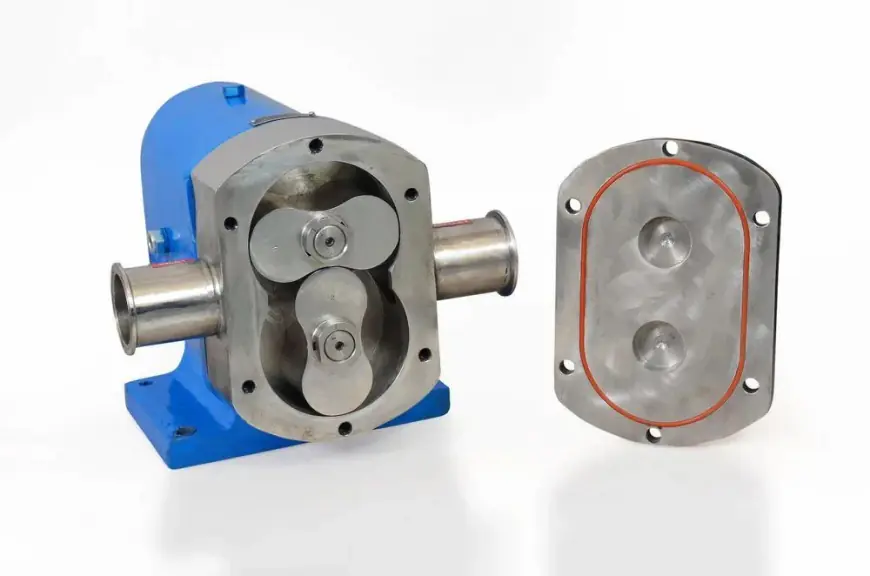Key Considerations for Maintaining Your Rotary Lobe Pump
When it comes to industrial equipment, one of the most crucial pieces for handling liquids and slurries with varying viscosities is the rotary lobe pump. These pumps are essential in many industries such as food and beverage, pharmaceuticals, wastewater treatment, and more. While these pumps are designed to be robust and reliable, like any mechanical device, they require regular maintenance to ensure optimal performance and longevity. In this article, we'll explore the key considerations for maintaining your rotary lobe pump and highlight the best practices for keeping it running smoothly.

Understanding the Rotary Lobe Pump
Before delving into maintenance tips, it’s important to understand what makes the rotary lobe pump such a reliable and versatile piece of equipment. These pumps utilize two or more lobes that rotate in opposite directions within a chamber. As the lobes rotate, they trap fluid between the lobes and the pump casing, moving it from the inlet to the outlet. The gentle, positive displacement nature of the pump makes it ideal for handling delicate liquids, slurries, and viscous fluids.
Why is Regular Maintenance Important?
Regular maintenance of your rotary lobe pump is critical for several reasons:
-
Prevents Unforeseen Downtime: Timely maintenance helps avoid sudden failures and costly downtime, ensuring continuous operation.
-
Enhances Efficiency: Keeping your pump in good condition ensures it operates at peak efficiency, reducing energy consumption and operational costs.
-
Extends Equipment Life: Proper care and routine inspections help extend the lifespan of your rotary lobe pump, making it a more cost-effective long-term investment.
-
Reduces Risk of Contamination: Particularly in the food and beverage or pharmaceutical industries, maintaining your pump ensures it does not become a source of contamination.
Key Maintenance Areas for Rotary Lobe Pumps
1. Regular Inspection of the Pump's Exterior and Components
The first step in maintaining your rotary Lobe Pump is a regular inspection of the external components. Look for any visible damage, such as cracks in the casing, loose bolts, or misalignment. Pay close attention to the seals and gaskets, as these are prone to wear over time.
2. Checking the Lubrication System
The lubrication system of your rotary lobe pump plays a vital role in minimizing friction between moving parts. Check the lubricant level regularly and ensure that it's clean. Dirty or low lubrication can lead to premature wear of the lobes and other internal components.
3. Monitoring Lobe and Rotor Wear
The lobes and rotors are the heart of the rotary lobe pump, and over time, they can wear down due to the constant mechanical stress. Regularly inspect these parts for signs of wear, such as scoring, cracking, or pitting. Replacing worn components promptly is essential to maintain the pump’s efficiency and prevent further damage.
4. Checking the Shaft Alignment
Misalignment of the pump’s shaft can cause significant damage to the internal components, especially the bearings and seals. Always ensure that the shaft is correctly aligned during installation and after any repairs or adjustments. Misalignment can also cause excessive vibration and noise, indicating the need for immediate attention.
5. Cleaning the Pump System
Dirt, debris, and sludge can build up inside the rotary lobe pump over time, reducing its efficiency. Regular cleaning is essential, especially for pumps used in food and beverage or pharmaceutical industries. Use appropriate cleaning agents and methods, depending on the type of fluid handled by the pump.
6. Replacing Worn Seals and Gaskets
Seals and gaskets are critical for maintaining the pump’s pressure and preventing leaks. Over time, these components can wear out, leading to leaks and potential contamination. Regularly check seals and gaskets for signs of wear, and replace them as necessary to avoid issues with fluid leakage.
7. Inspecting the Pump’s Pressure and Flow
Keeping an eye on the pressure and flow rates is another crucial aspect of maintaining your rotary lobe pump. Significant fluctuations in pressure or flow can indicate underlying issues such as blockages, leaks, or worn-out components. Use pressure gauges and flow meters to regularly monitor these metrics and take corrective action when necessary.
8. Assessing the Motor and Drive Components
The motor and drive components are responsible for powering the pump. Over time, these components can experience wear and tear due to the strain of continuous operation. Inspect the motor, drive belts, and pulleys regularly for any signs of damage, wear, or misalignment.
9. Preventing Cavitation
Cavitation occurs when air bubbles form within the pump due to low pressure or flow restrictions. This can cause significant damage to the lobes and casing. Ensure that the pump operates within the recommended parameters to avoid cavitation and maintain efficient performance.
10. Keeping Track of Maintenance Records
Maintaining detailed records of all inspections, repairs, and replacements is essential for the long-term management of your rotary lobe pump. A well-kept log can help track the performance of the pump, schedule future maintenance, and identify recurring issues that need attention.
Best Practices for Maintaining Your Rotary Lobe Pump
Use the Right Fluids
When selecting fluids for your rotary lobe pump, always ensure they are compatible with the pump materials and suited for the intended application. Using inappropriate fluids can cause damage to internal components and reduce pump performance.
Follow Manufacturer Recommendations
Each pump model comes with specific maintenance guidelines from the manufacturer. Always follow the recommended maintenance schedule and procedures to ensure you are providing the best care for your rotary lobe pump. This ensures that you’re not voiding warranties and guarantees maximum pump efficiency.
Train Your Team
Proper training is essential for anyone operating or maintaining a rotary lobe pump. Make sure your team understands the importance of regular inspections, the signs of potential issues, and how to address common problems quickly.
Implement a Predictive Maintenance Strategy
Advancements in technology allow for predictive maintenance strategies, where sensors and monitoring tools track the health of your pump in real time. This approach can help you predict failures before they happen and schedule repairs proactively, reducing downtime and increasing overall system efficiency.
Perform Regular Tests and Calibration
Regular testing and calibration of your pump system can help identify early signs of inefficiency. This includes checking the flow rates, pressure, and the performance of individual components. Adjusting and recalibrating as necessary can help optimize the pump’s performance.
Troubleshooting Common Issues in Rotary Lobe Pumps
Even with the best maintenance practices, problems can still arise. Some common issues include:
-
Reduced Flow Rate: This can be caused by clogging, worn lobes, or incorrect pump speed.
-
Excessive Vibration or Noise: Often the result of misalignment, cavitation, or damaged components.
-
Leakage: Caused by worn seals, gaskets, or cracked casings.
-
Overheating: Often due to insufficient lubrication or excessive load on the motor.
For these issues, always conduct a thorough inspection and consult with an expert if necessary to address the root cause.
Conclusion
Maintaining a rotary lobe pump is essential for ensuring its longevity, efficiency, and reliability. Regular inspections, proper lubrication, monitoring wear on components, and following manufacturer guidelines are all vital aspects of effective maintenance. By implementing these key considerations and practices, you can significantly extend the life of your rotary lobe pump and keep it running at peak performance.
What's Your Reaction?
 Like
0
Like
0
 Dislike
0
Dislike
0
 Love
0
Love
0
 Funny
0
Funny
0
 Angry
0
Angry
0
 Sad
0
Sad
0
 Wow
0
Wow
0

















































